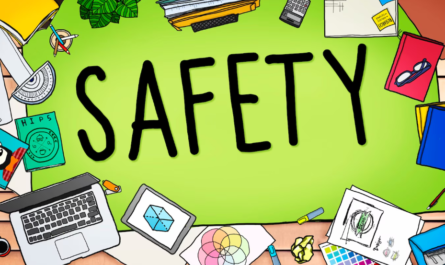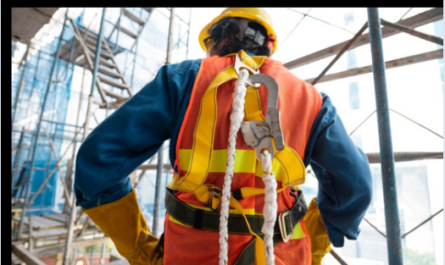🚧 Introduction: Who Really Owns Safety?
When we talk about workplace safety, most people picture the safety officer doing inspections, HR filing reports, or upper management enforcing policies. But here’s the truth that needs repeating:
Safety is not just a department’s job—it’s a line responsibility.
That means the real accountability lies with frontline supervisors and managers. They’re the boots on the ground, leading teams daily, influencing behaviors, and setting the tone. In this blog post, we’ll explore why safety must be a core part of every line manager’s role, how this mindset transforms workplaces, and actionable steps to make safety a habit—not a hassle.
🧭 What Is Line Responsibility in Safety?
Line responsibility means that each manager and supervisor is directly accountable for ensuring safety in their area of control—just as they are for productivity, quality, and deadlines.
In other words, safety isn’t a side task or something to “delegate.” It’s a core leadership function.
Line Responsibility vs. Staff Responsibility:
| Line Responsibility | Staff Responsibility |
|---|---|
| Held by operational managers and supervisors | Held by safety officers, HR, compliance teams |
| Direct authority over employees and workflows | Advisory and supportive roles |
| Makes day-to-day safety decisions | Develops policies, conducts audits |
| Responsible for outcomes and enforcement | Provides tools, training, guidance |
👉 Bottom line: Safety staff support the system, but line managers run the system.
🚨 Why Safety Belongs to Line Managers
1. They’re Closest to the Action
Line managers and supervisors interact with employees daily. They see the risks, the shortcuts, and the near-misses in real-time—often before any report is filed.
Real-world example: A warehouse floor manager notices a worker using a forklift improperly. Instead of escalating it to safety staff, they stop the activity, coach the worker, and prevent an accident. That’s line responsibility in action.
2. They Influence Attitudes and Behavior
Workers tend to model the behavior of their direct leaders. If the supervisor wears safety gear religiously, does pre-task checks, and never overlooks hazards—employees follow suit.
If they cut corners, guess what happens?
Culture flows downhill. Safety-minded leadership creates safety-minded teams.
3. They Control Work Conditions
Whether it’s scheduling shifts, assigning duties, or ordering equipment—line managers have the power to shape the safety conditions under which work is performed.
Ignoring safety for the sake of speed is not just reckless; it’s managerial failure.
🛠️ Core Responsibilities of Line Managers for Safety
✅ 1. Lead by Example
The fastest way to kill a safety culture is with a “do as I say, not as I do” attitude.
- Always wear proper PPE
- Follow every protocol, no matter how small
- Treat safety as non-negotiable
✅ 2. Conduct Daily Safety Checks
- Pre-start inspections of tools and machinery
- Review checklists before shift starts
- Walkthroughs to spot potential hazards
✅ 3. Provide Ongoing Safety Training
While safety officers can deliver formal sessions, line managers must reinforce those lessons on the floor:
- Daily toolbox talks
- On-the-job coaching
- Corrective feedback when unsafe behavior is observed
✅ 4. Encourage Reporting and Speak-Up Culture
Create an environment where employees can report hazards, near-misses, or unsafe practices without fear.
Use phrases like:
- “Thanks for bringing that up.”
- “Let’s fix this together.”
- “Your safety matters more than speed.”
✅ 5. Investigate and Act Swiftly
If an incident occurs, the first person responsible is the line manager. Not for blame—but for initiating root cause analysis and ensuring corrective actions.
📊 The Payoff: Why Safety Responsibility Pays Off for Managers
It’s tempting for line managers to see safety as “extra work,” especially under pressure to hit KPIs.
But here’s what many don’t realize:
💰 1. Fewer Injuries = More Productivity
Every incident leads to:
- Lost time
- Paperwork
- Low morale
- Disruptions
Safe environments foster efficient teams, less downtime, and higher output.
🙌 2. Better Team Engagement
When employees see their manager genuinely caring about their safety, trust builds. That trust leads to:
- Higher retention
- Stronger communication
- Team accountability
🏆 3. Recognition and Growth
Companies increasingly measure leadership performance by safety outcomes. Managers who consistently maintain safe teams often rise faster through the ranks.
📉 Consequences of Neglecting Line Responsibility
Let’s flip the coin. What happens when line managers ignore safety?
- Increased injury rates
- Legal liabilities
- Reputational damage
- Low employee morale and high turnover
And worst of all?
Someone might not go home.
Neglecting safety isn’t just poor management—it’s unethical.
💼 Safety in Different Industries: Practical Insights
🏭 Manufacturing
- Lockout/tagout during machine maintenance
- Safe material handling practices
- Regular ergonomic checks
🛠️ Construction
- Daily hazard briefings
- Scaffold and ladder inspections
- PPE enforcement at every stage
🏥 Healthcare
- Infection control protocols
- Safe patient handling
- Immediate incident reporting for needle sticks
🚚 Logistics
- Vehicle checks before shifts
- Warehouse pathway clearance
- Driver rest and fatigue monitoring
👉 No matter the industry, the rule holds: Line managers must own the safety narrative.
🧩 Integrating Safety into Line Leadership KPIs
To truly embed safety in line responsibility, organizations must reflect it in performance metrics.
Sample KPIs for Line Managers:
| KPI | Description |
|---|---|
| Safety audit pass rate | % of compliance during routine checks |
| Incident rate | # of injuries or near-misses per shift |
| Corrective action closure time | Speed of resolving reported issues |
| Safety meeting attendance | Participation in safety communication |
| Employee safety feedback score | Sentiment from pulse surveys or 1:1s |
Tip: Incentivize safety as much as productivity—if not more.
📢 Common Myths That Hurt Line Responsibility
Let’s bust some myths:
❌ “Safety is the safety officer’s job.”
Nope. They guide—you lead.
❌ “We don’t have time for safety.”
If you don’t have time for safety, you’ll find time for injuries.
❌ “We’ve been doing it this way for years.”
Until someone gets hurt. Safety evolves. So should practices.
🔄 How to Shift the Mindset Across Your Organization
Step 1: Top-Down Commitment
Executives must communicate that safety is a leadership expectation, not an option.
Step 2: Middle Management Training
Invest in equipping line managers with tools, techniques, and authority to drive safety.
Step 3: Accountability Systems
Tie safety outcomes to evaluations and bonuses. What gets measured, gets managed.
Step 4: Recognition Programs
Celebrate teams and managers who demonstrate proactive safety leadership.
🧠 Real-World Example: The Toyota Way
Toyota is globally known not just for quality—but also for safety excellence. Why?
They’ve embedded safety into every level of the production process, with supervisors conducting daily checks and line employees empowered to stop production if unsafe.
Their success proves the point: Safety thrives when responsibility is shared at the line level.
📝 Final Thoughts: Safety Starts With You
Whether you’re a frontline supervisor in a factory or a team leader in a logistics hub, remember this:
You are the first line of defense. You are the culture carrier. You are the difference between a safe day and a tragic one.
Don’t wait for the safety department to act. Start with your own crew. Build trust. Set expectations. Lead with integrity.
Because in the end, safety isn’t someone else’s job. It’s yours.
📚 Suggested Readings & Resources
- The Safety Anarchist by Sidney Dekker
- OSHA (Occupational Safety and Health Administration) Guidelines
- “Safety Differently” framework
- SafetyCulture App for mobile inspections
💬 What’s Your Take?
Do you believe line managers are the right people to lead safety? What has worked (or failed) in your organization?
Drop a comment below and let’s start the conversation. Or share this with a colleague who needs to hear it.
🔁 Readers also enjoyed these blog posts:
- Safety Management’s Role: The Unsung Hero Behind Every Successful Organization
- Safety Management and Its Responsibilities: Protecting People, Preventing Hazards, and Promoting a Culture of Care
- Benchmarking for Safety Performance: A Key to Continuous Improvement
“Start Your Website Journey Today – Exclusive Hostinger Discounts!”

Turn Any Idea into Viral,
Jaw-Dropping AI Videos in Seconds!










